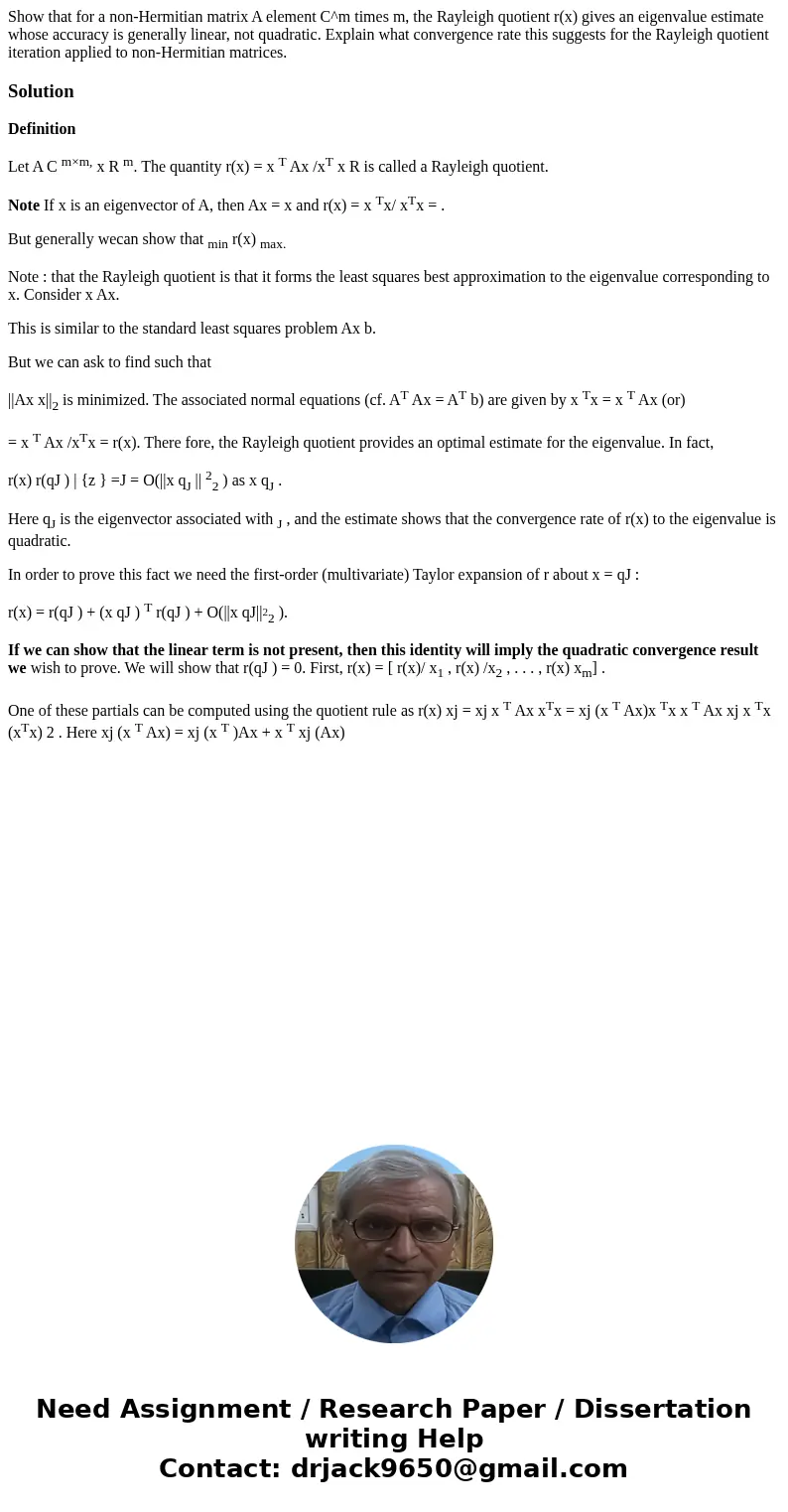Show that for a nonHermitian matrix A element Cm times m the
Solution
Definition
Let A C m×m, x R m. The quantity r(x) = x T Ax /xT x R is called a Rayleigh quotient.
Note If x is an eigenvector of A, then Ax = x and r(x) = x Tx/ xTx = .
But generally wecan show that min r(x) max.
Note : that the Rayleigh quotient is that it forms the least squares best approximation to the eigenvalue corresponding to x. Consider x Ax.
This is similar to the standard least squares problem Ax b.
But we can ask to find such that
||Ax x||2 is minimized. The associated normal equations (cf. AT Ax = AT b) are given by x Tx = x T Ax (or)
= x T Ax /xTx = r(x). There fore, the Rayleigh quotient provides an optimal estimate for the eigenvalue. In fact,
r(x) r(qJ ) | {z } =J = O(||x qJ || 22 ) as x qJ .
Here qJ is the eigenvector associated with J , and the estimate shows that the convergence rate of r(x) to the eigenvalue is quadratic.
In order to prove this fact we need the first-order (multivariate) Taylor expansion of r about x = qJ :
r(x) = r(qJ ) + (x qJ ) T r(qJ ) + O(||x qJ||22 ).
If we can show that the linear term is not present, then this identity will imply the quadratic convergence result we wish to prove. We will show that r(qJ ) = 0. First, r(x) = [ r(x)/ x1 , r(x) /x2 , . . . , r(x) xm] .
One of these partials can be computed using the quotient rule as r(x) xj = xj x T Ax xTx = xj (x T Ax)x Tx x T Ax xj x Tx (xTx) 2 . Here xj (x T Ax) = xj (x T )Ax + x T xj (Ax)

 Homework Sourse
Homework Sourse